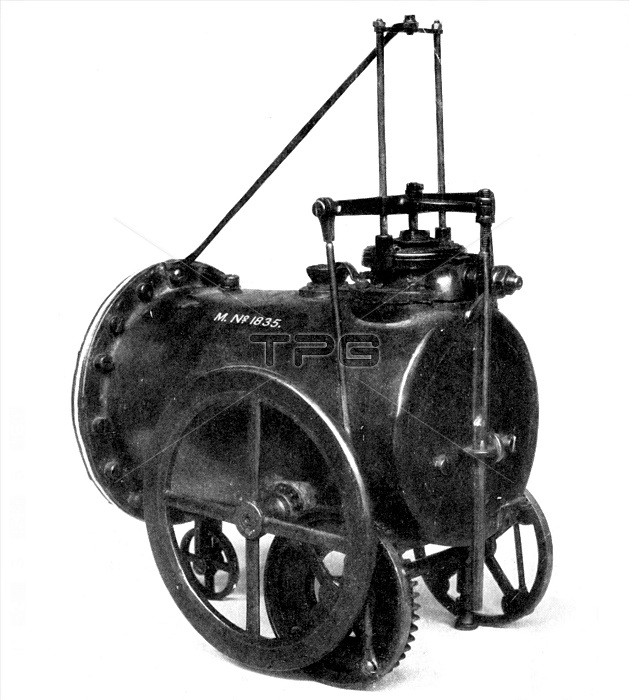
Richard Trevithick made this working model locomotive in 1797. Its success encouraged Trevithick to manufacture full-size road and rail locomotives. As he became more experienced, he realized that improvements in boiler technology now permitted the safe production of high pressure steam, and that this could be made to move a piston in a steam engine on its own account, instead of using a pressure of close to one atmosphere in a condensing engine. Not only would a high pressure steam engine eliminate the condenser but it would allow the use of a smaller cylinder, thus saving space and weight. He reasoned that his engine could now be more compact, lighter and small enough to carry its own weight even with a carriage attached. He started building his first models of high pressure steam engines, initially a stationary one and then one attached to a road carriage. Exhaust steam was vented via a vertical pipe or chimney straight into the atmosphere, thus avoiding a condenser and any possible infringements of Watt's patent. The linear motion was directly converted into circular motion via a crank instead of using an inefficient beam.
| px | px | dpi | = | cm | x | cm | = | MB |
Details
Creative#:
TOP22167271
Source:
達志影像
Authorization Type:
RM
Release Information:
須由TPG 完整授權
Model Release:
N/A
Property Release:
No
Right to Privacy:
No
Same folder images:

 Loading
Loading